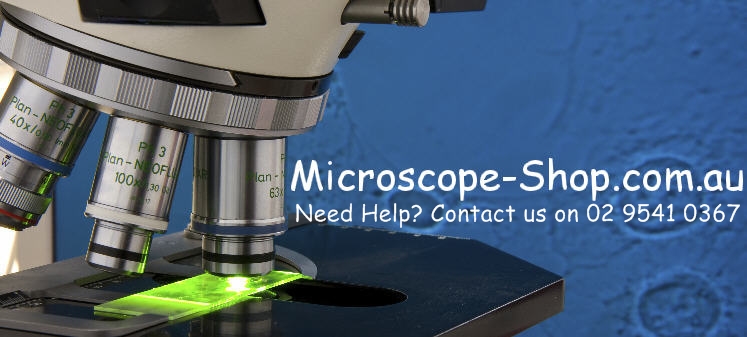|
|
 |
|
|
Glossary of Microscope Terms
Abbe Condenser:
Consists of a lens and an adjustable iris and is mounted below the stage The iris
controls the amount of light passing through the
specimen. The focal point of the light emerging from
the lens is controlled by adjusting the vertical
position of the lens using a rack and pinion
control.
Achromatic Lens: Prevents
colour separation when light passes through a
microscope lens. As light frequencies have different
refractive indices colour separation will occur when
light passes through a lens. By using glass with
varying indices of refraction, achromatic lenses can reduce
the degree of colour separation. See also plan and
semi-plan objectives. Eyepiece: In a compound and stereo microscope the eyepiece is the lens through which you view. It is also called an ocular lens.Oil Immersion Lens: Oil immersion is used with the 100 x objective of a compound light microscope. Light is refracted when it passes through one medium into another with a different refractive index, (for example air to glass). This results in a loss of definition of the image. Immersion oil has the same refractive index as glass. Therefore there is no refraction of light when it passes from glass to oil and from oil to glass. By placing a drop of immersion oil on a slide, and immersing the 100x oil immersion objective directly into the drop we reduce refraction between the specimen and the objective and so preserve clarity of the image.
Mechanical Stage: A
microscope stage supports a specimen glass slide. A
mechanical stage moves in two directions. To
position the specimen under the objective the stage
is moved using dual rack and pinion controls.
Monocular Microscope: A compound microscope with a single eyepiece.Plan and Semi Plan Objectives: Stereo Microscopes (dissection microscopes): are used to examine “large” specimens such as insects, fossils, flowers, plants etc. Stereo microscopes use two objectives and two eyepieces to give separate views of the specimen creating a three dimensional view of the object. Unlike compound microscopes the two objectives sit at a distance from the specimen allowing it to be manipulated, or dissected while viewed through the microscope. Unlike compound microscopes their magnification is low, typically up to 80X. Illumination is from above the object, although many stereo microscope also illuminate from below the object.
|
|